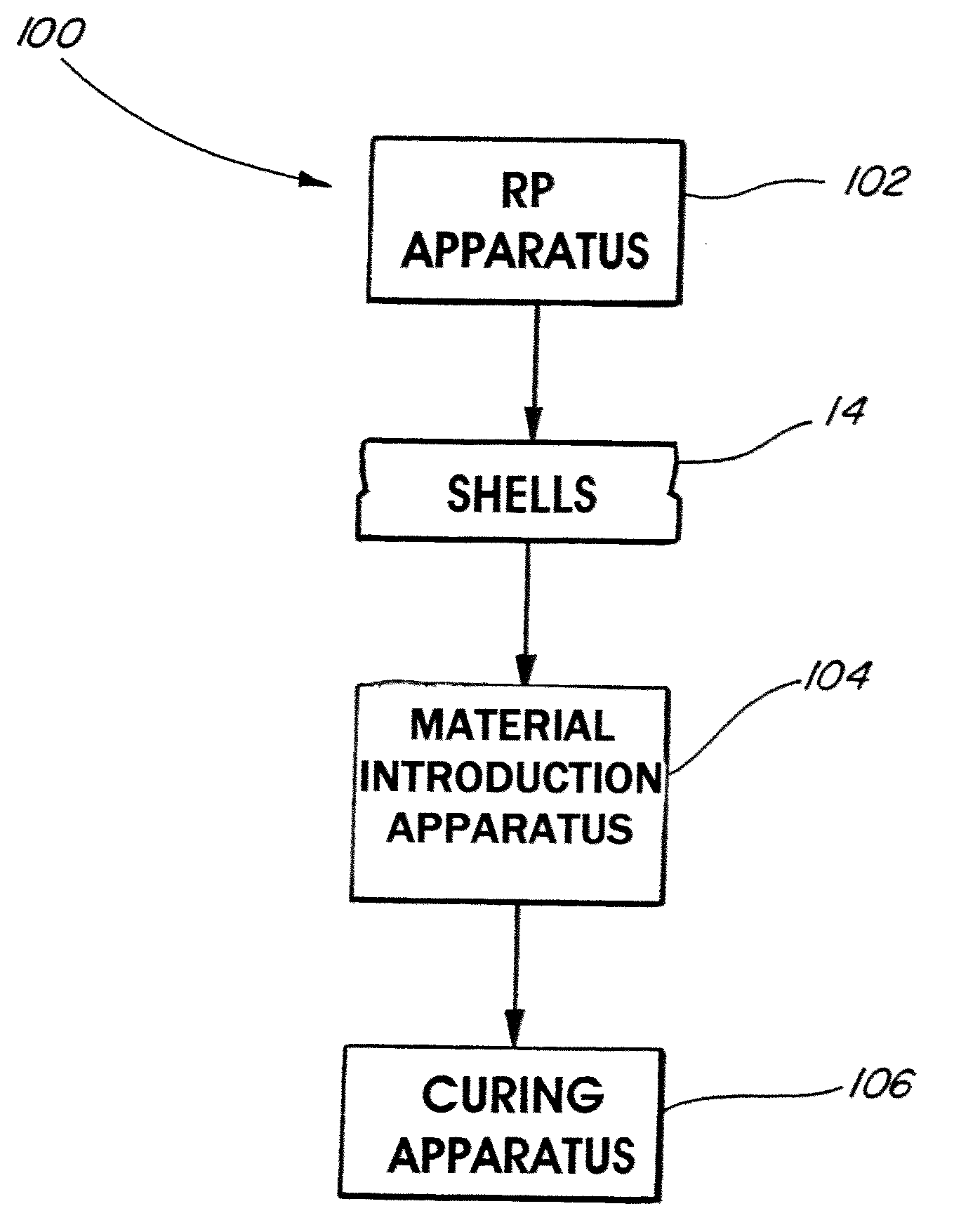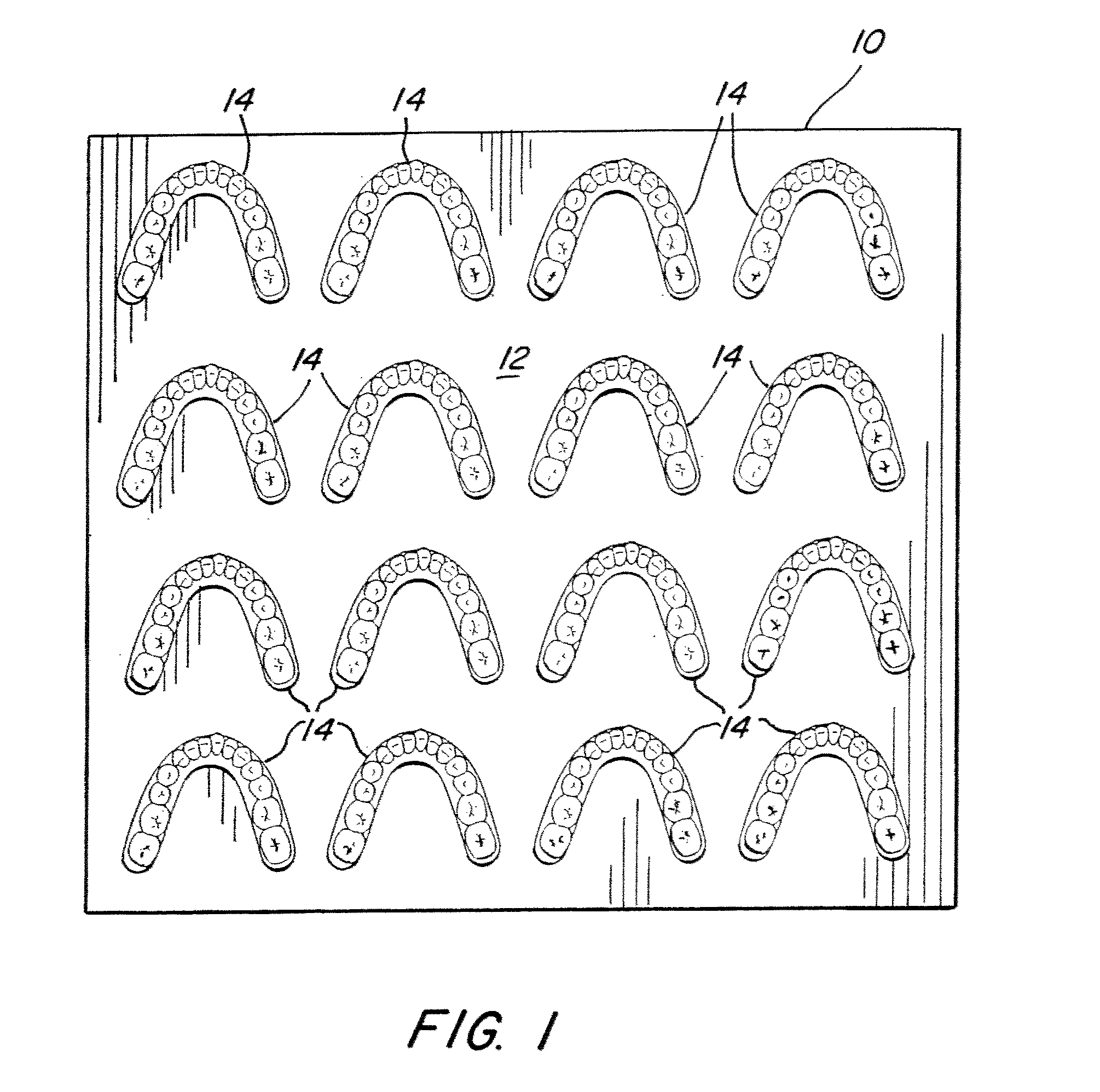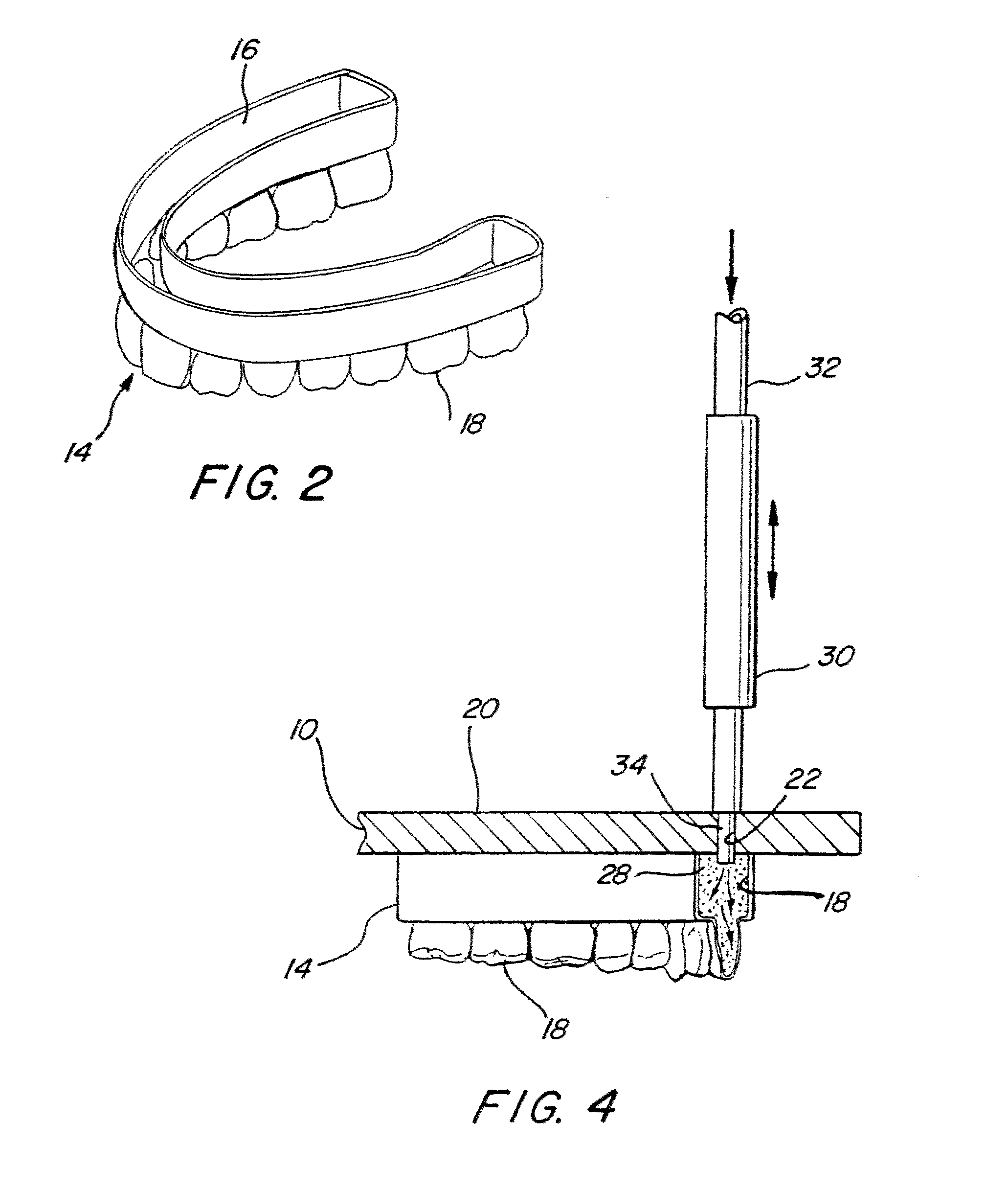Reinforced thin-shell molds
a technology of reinforced thin shell and polymeric resin, which is applied in the direction of manufacturing tools, applications, electric/magnetic/electromagnetic heating, etc., can solve the problems of increasing the amount of material that can be removed without degrading the structural integrity, requiring the use of a considerable amount of polymeric resin material, and increasing the cost of each layer
- Summary
- Abstract
- Description
- Claims
- Application Information
AI Technical Summary
Problems solved by technology
Method used
Image
Examples
Embodiment Construction
[0017]Referring now to the drawings, FIG. 1 shows a tray or platform 10, having a top or upper surface 12 on which a plurality of polymeric resin mold shells 14 are formed by a conventional rapid-prototyping process, such as stereolithography (SLA), in a rapid-prototyping apparatus. The mold shells 14 are shown in the form of molds for orthodontic aligners, but they may be configured for molding any desired plastic item. If the mold shells 14 are made by the SLA process, they are built up, layer by layer, on the surface 12 of the platform 10 in an SLA apparatus.
[0018]An array of predefined mold locations is defined on the top surface 12 of the platform 10, and each of the mold shells 14 is formed at one of the predefined mold locations, all of the mold shells 14 being formed simultaneously at their respective mold locations. An exemplary mold shell 14, in accordance with a first embodiment of the invention, is shown in FIG. 2. The mold shell 14 has a hollow interior 16 and an exteri...
PUM
| Property | Measurement | Unit |
|---|---|---|
| internal volume | aaaaa | aaaaa |
| volume | aaaaa | aaaaa |
| temperature | aaaaa | aaaaa |
Abstract
Description
Claims
Application Information
 Login to View More
Login to View More - R&D
- Intellectual Property
- Life Sciences
- Materials
- Tech Scout
- Unparalleled Data Quality
- Higher Quality Content
- 60% Fewer Hallucinations
Browse by: Latest US Patents, China's latest patents, Technical Efficacy Thesaurus, Application Domain, Technology Topic, Popular Technical Reports.
© 2025 PatSnap. All rights reserved.Legal|Privacy policy|Modern Slavery Act Transparency Statement|Sitemap|About US| Contact US: help@patsnap.com



